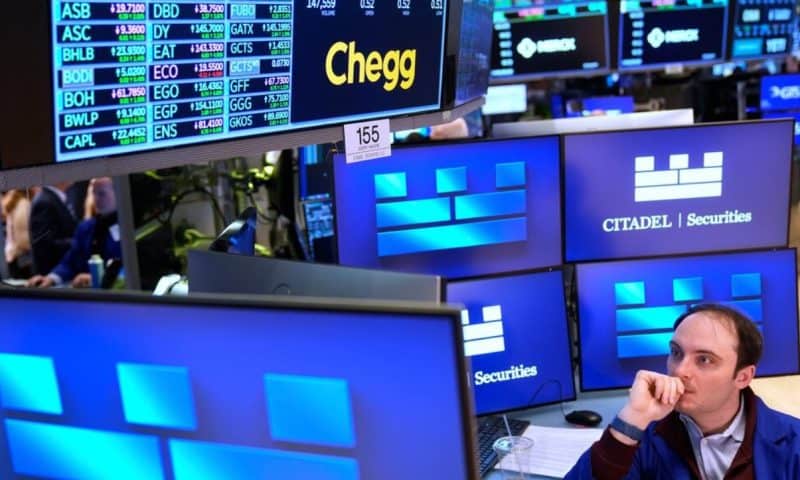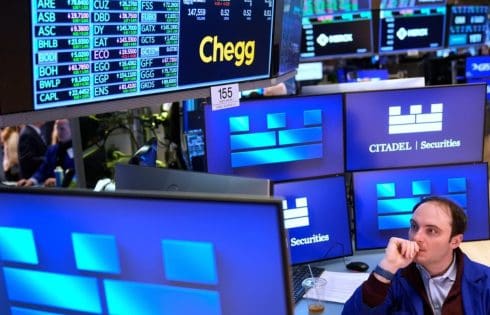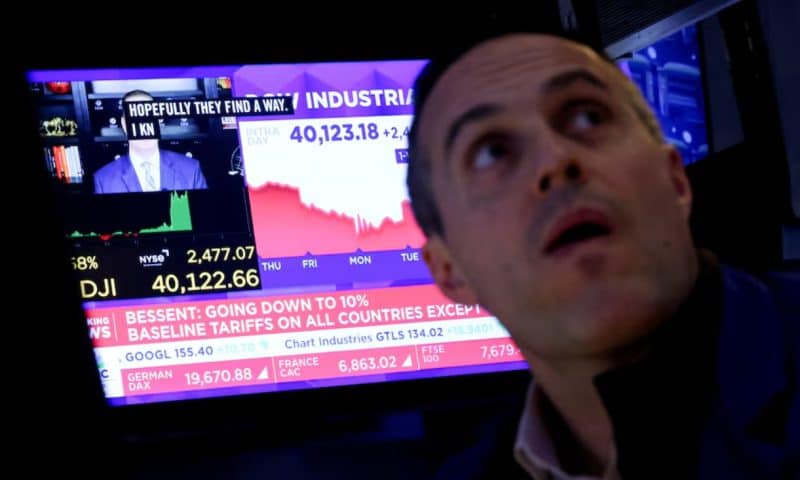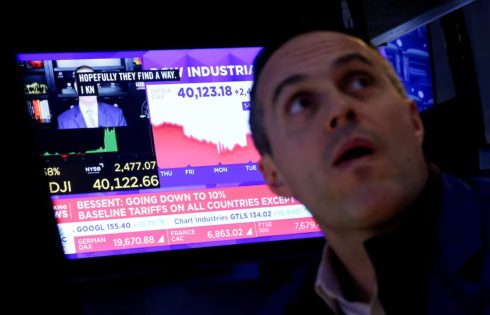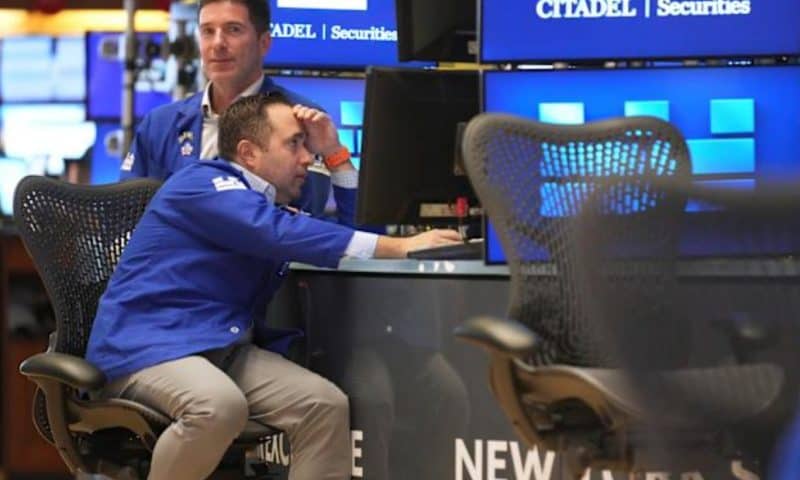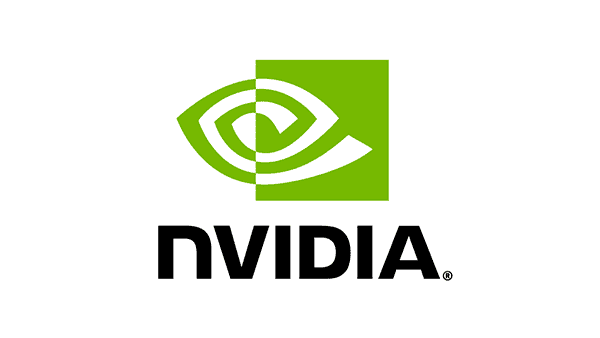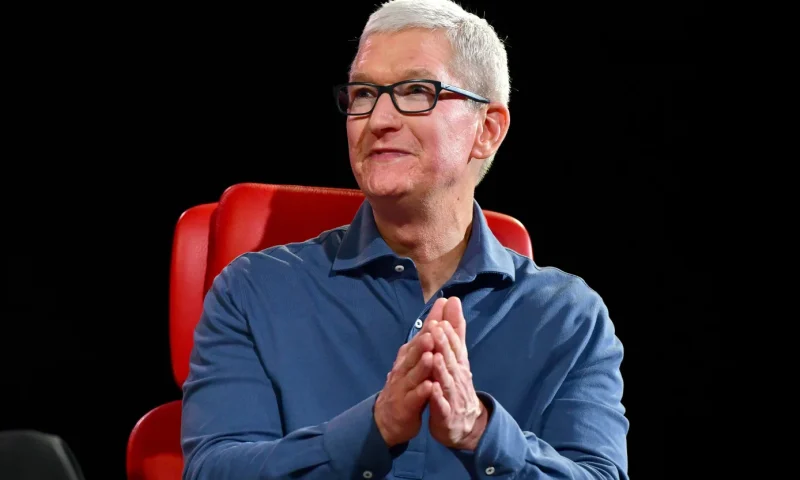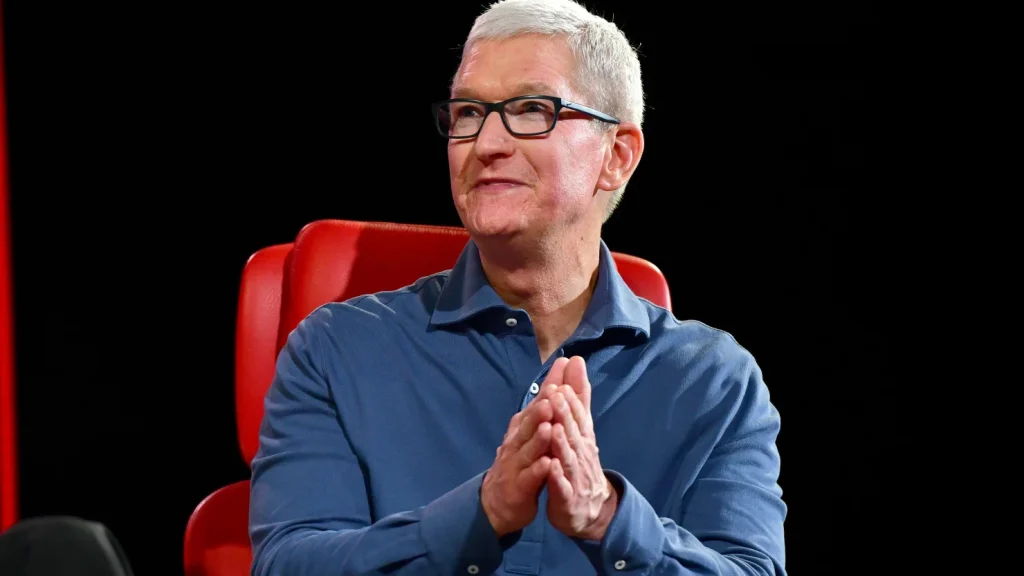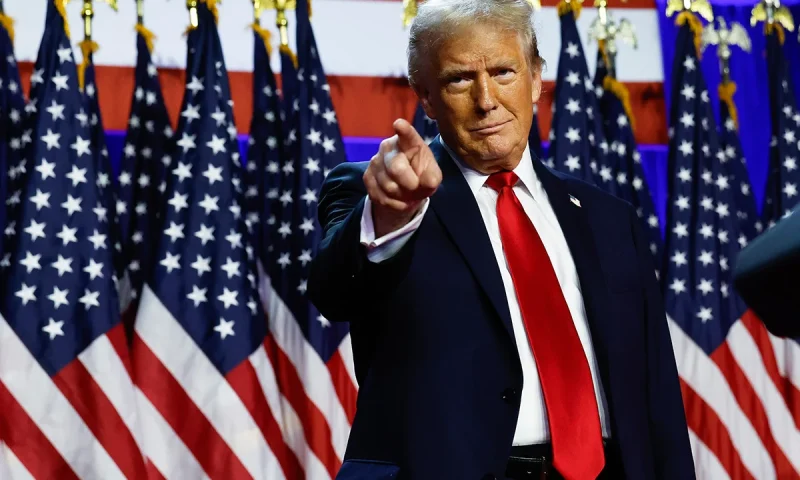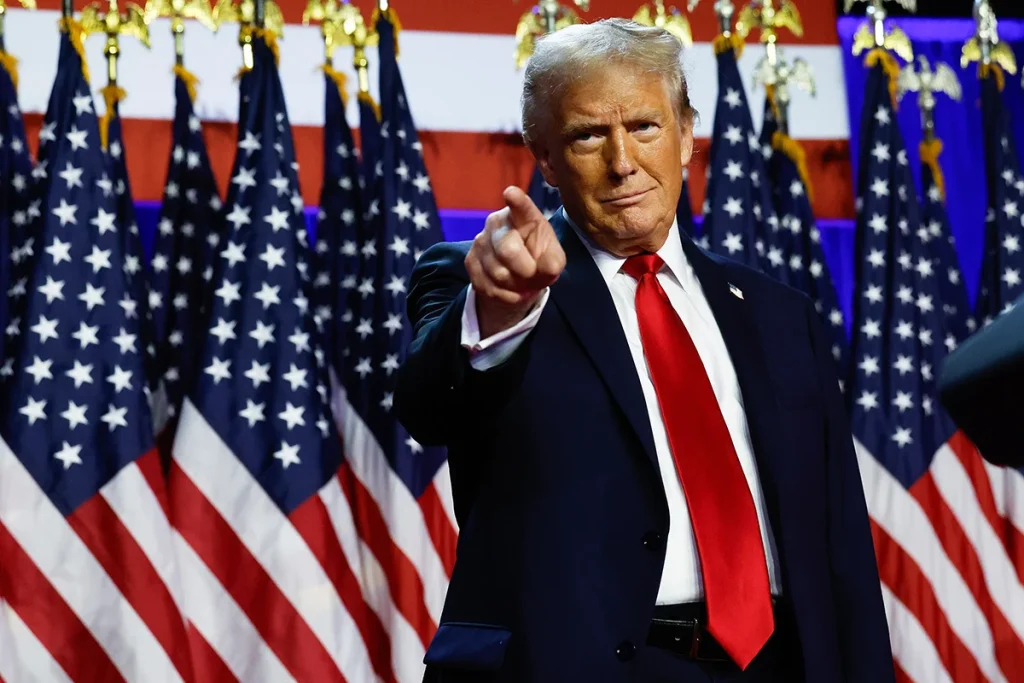Wall Street surged after U.S. President Donald Trump announced a 90-day pause in tariffs unveiled last week that roiled markets and erased trillions of dollars from global stock markets.
The policy changes also include a lowered overall tariff of 10% during that 90-day period, and an increase in tariffs on Chinese imports to 125%, from the 104% that went into effect overnight.
TREASURIES: U.S. Treasury benchmark yields pared gains after the tariff announcement, following a government auction of $39 billion 10-year notes that suggested good demand. The auction came amid a bond market rout that was sparked by the U.S. tariffs and prompted forced selling and a dash for cash.
CURRENCIES: The U.S. dollar — which had been lower earlier in the day — strengthened against the yen and other currencies.
“It has been great news for the market… to see U.S. bonds sell off has been very strange, amid a broader emphasis on taking risk off in portfolios. Seeing stress build in the credit market was really worrying. So today was a great relief.
“But we’re still not clear what it all means yet, for the EU, for instance. And an increase in tariffs on China is not a good thing, especially for retailers.
“It’s beginning to look like this thing has been all about China. Certainly, the big tariffs package just didn’t make sense to economists like me. It felt like they were creating maximum leverage by creating maximum chaos — classic game theory. So we needed a reprieve from that, and got one.”
TOM GRAFF, CHIEF INVESTMENT OFFICER, FACET, PHOENIX, MARYLAND
“It sounds like Trump is pivoting to a focus on China, and going easier on other countries. I still think a 10% universal tariff will have negative effects, but if this 90-day pause becomes more long term, it takes the worst-case scenario off the table.”
TIM HOLLAND, CFA, CHIEF INVESTMENT OFFICER, ORION, OMAHA, NEBRASKA
“Investors will anxiously be waiting to see how other nations respond. We also think the fact that U.S. investor sentiment was so bearish heading into today’s announcement by the president is additional fuel for the move higher.”
RON PICCININI, DIRECTOR OF INVESTMENT RESEARCH, AMPLIFY, SCOTTSDALE, ARIZONA
“Today’s move is a classic example of why not to panic, and why having a disciplined approach is so crucial.”
“Our allocations are remaining unchanged, as we viewed the current episode as a bit of a replay of the events of December 2018, where the markets were down 18.5% by December 24, amid fears related of trade tariffs, government spending, high equity valuations, and interest levels considered too high by some. Markets made back all the losses quickly (about a month and a half)… we stay the course.”
GINA BOLVIN, PRESIDENT OF BOLVIN WEALTH MANAGEMENT GROUP IN BOSTON
“This is the pivotal moment we’ve been waiting for. The immediate market reaction has been overwhelmingly positive, as investors interpret this as a step toward much-needed clarity. The timing couldn’t be better, coinciding with the start of earnings season, which kicks off with the big banks this Friday.
“This pause may provide companies with a clearer backdrop for their guidance, offering some relief to a market hungry for direction.
“However, uncertainty looms over what happens after the 90-day period, leaving investors to grapple with potential volatility ahead.”
UTO SHINOHARA, SENIOR INVESTMENT STRATEGIST, MESIROW CURRENCY MANAGEMENT, CHICAGO
“Amid the recent doom-and-gloom sentiment, investors were eager for any signs of optimism… Risk-sensitive currencies saw the strongest rebound, led by the Australian dollar, while traditional safe-havens like the Japanese yen and Swiss franc came under pressure.”
AMARJIT SAHOTA, EXECUTIVE DIRECTOR, KLARITY FX, SAN FRANCISCO
“The questions are really going to come: why did we see this reprieve today and is it even a good idea? Personally, I don’t think it’s a good idea: 90-day pause just creates more uncertainty.”
“But why today? I think that the talking point on nearly all desks this morning was what on earth is happening with the U.S. 10-year yield and why were we seeing this huge rally in the yields and people are offloading bonds and who in particular is offloading those bonds? … Speculation has been that it was real money sellers and also foreign interest. That may have been enough to spook the administration into offering a reprieve.”
STUART THOMAS, FOUNDING PRINCIPAL, PRECIDIAN INVESTMENTS, NEW YORK
“This is a positive signal for the markets and validates Trump’s use of tariffs as a negotiating tool and highlights his willingness to deal with our trading partners in good faith.”
CAROL SCHLEIF, CHIEF MARKET STRATEGIST, BMO PRIVATE WEALTH, MINNEAPOLIS, MINNESOTA
“Markets had been looking for a reason to rally for a few days. Markets can only sustain extreme conditions for so long before exhaustion sets in – rather like a toddler and a tantrum.”
“The 90-day suspension does allow nice breathing room to allow negotiation to settle in and market valuations have clearly been reset. Yet, the uncertainty for companies remains.”
STEVE SOSNICK, CHIEF MARKET STRATEGIST, INTERACTIVE BROKERS, GREENWICH, CONNECTICUT
“This was definitely a surprise, considering that the administration consistently said they would not back off the tariffs and that they were non-negotiable… This is a very understandable relief rally.”
“We now have to wonder whether the tariffs resume in 90 days or not. That will impede companies’ ability to plan for the near future and to offer guidance regarding the current quarter. Uncertainty is reduced, but not fully dissipated.”
JAY HATFIELD, CEO, INFRASTRUCTURE CAPITAL ADVISORS, NEW YORK
“This is going to come as a huge relief to the markets. This is what should have been done initially… We think that the selloff was overdone anyway and nobody was taking into consideration that oil prices are lower and that there are positive things happening too.”
“We are now set up for a good rally going into the earnings season… this rally makes sense now. There will be some residual concerns around the broader economy and recession, but that will get clearer with more data.”
ART HOGAN, INVESTMENT STRATEGIST, B. RILEY WEALTH MANAGEMENT, BOSTON
“The day that felt really nuts was two days ago, when someone on Twitter posted what the White House called a fake news report that Donald Trump was considering doing what now he has just done – halt tariffs for 90 days. That triggered $2 trillion in buying in just eight minutes. Now we have the reality, and it’s no surprise we’re seeing another giant move upward.”
ALEX MORRIS, CHIEF INVESTMENT OFFICER, F/M INVESTMENTS, WASHINGTON, D.C.
“This is a giant meltup, because the announcement was the walkback the market needed to see. They hit the pause button and the market rejoiced. But of course, there is no promise that we’ll manage to solve anything in 90 days. We’re certainly not out of the woods, and we may see inflation data spike.
“What convinced the president to act was the bond market, which had begun sending signals that this was going to get steadily worse. The market moves have been an absolute whiplash… Stocks are trading on tweets and sentiment and the fear of silly policies being enacted. But there is plenty of liquidity and the market structure has held up very well.”
MARK HACKETT, CHIEF MARKET STRATEGIST, NATIONWIDE INVESTMENT MANAGEMENT GROUP, PHILADELPHIA
“It’s definitely good news because it shows that the negotiations are in good enough shape that they think that they’ve accomplished what they needed to by this initial conversation.”
“But I want to put a pretty big caveat out there because 8% rallies in 20 minutes in the Nasdaq aren’t a heck of a lot healthier than 8% declines … so I’m careful about giving an all-clear.”
CHRISTOPHER HODGE, CHIEF ECONOMIST FOR THE US,
NATIXIS IN NEW YORK
“We had assumed that some form of capitulation would be forthcoming – the financial carnage, let alone the economic pain that has yet to be felt, and it was inconceivable that the administration to endure for much longer. The decoupling with China looks to be real with no sign of concessions from either side. Will the EU similarly stand firm? The fractures appear to be deep.”
“We may revert to the Trump 1.0 playbook of foreign countries agreeing to purchase more specific goods from the U.S. This could improve the trade deficit marginally, but will not fundamentally change the trading relationship like the administration desires.”
JOHN CANAVAN, LEAD ANALYST, OXFORD ECONOMICS, NEW YORK
“The way President Trump worded this makes it not entirely clear if we actually have a pause or if we just have lower reciprocal tariffs at 10%… the president is backing off some of the worst of his tariff threats here, and I think that’s clearly going to be a net positive for risk assets.”
“One thing that it doesn’t do is eliminate uncertainty… because the level of tariffs just seems to change from day to day.”
“This only adds to the broader uncertainty as we go forward. But at least for the time being, while we can’t be certain where the tariff situation is going to wind up, we can at least see that the president is showing an increased willingness to back down from the worst of his tariff threats and allow for some calm to enter the markets.”
(This story has been corrected to fix the date to December 24, not December 4, in paragraph 12)







